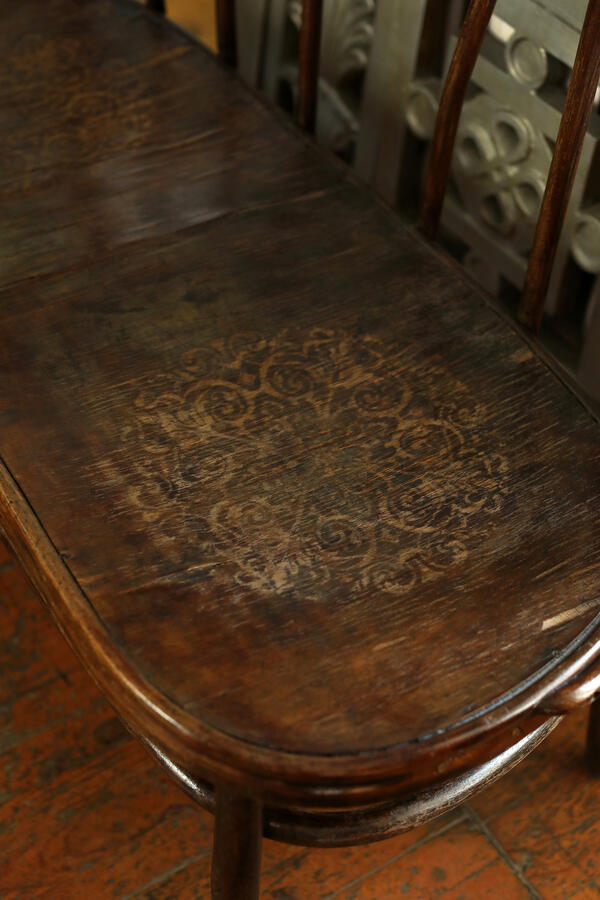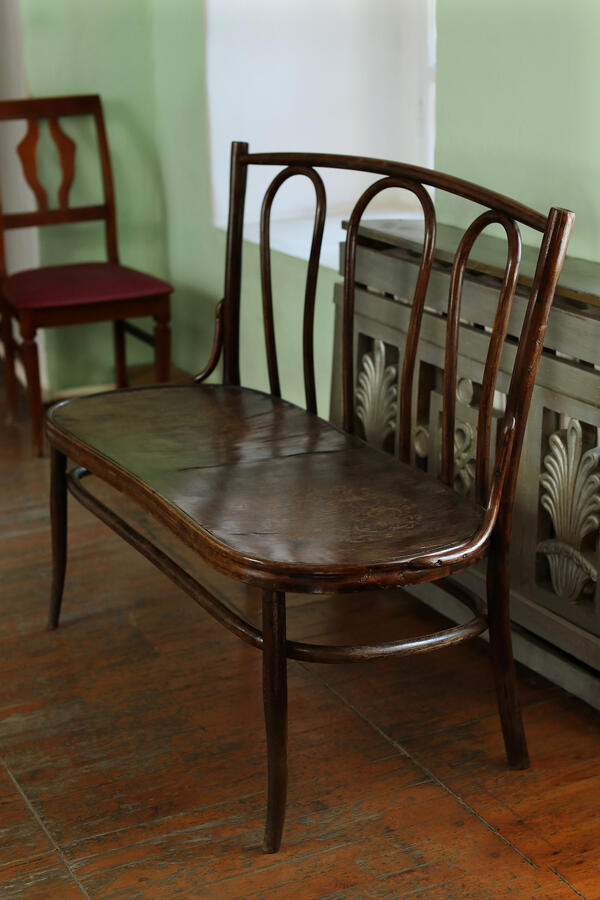The bench from the museum collection is an example of bentwood furniture. Such furniture originally appeared in England in the 17th century. At that time, bent wood was used to make sleds, skis, boats, barrels, and other practical items. The Austrian furniture maker Michael Thonet adapted this technique for factory furniture production.
In 1819, Thonet opened the first furniture workshop focusing on parquetry. In 1830, he started experimenting with carpentry.
Michael Thonet created chairs from plywood sheets that were bent together and then glued in four or five layers. Thanks to this technique, the products were light and compact. In 1842, Chancellor Richard von Metternich invited the craftsman to Vienna. For the next five years, Michael Thonet worked on neo-Rococo interiors at the Stadtpalais Liechtenstein. This marked the beginning of mass production of bentwood furniture.
Michael Thonet’s furniture quickly gained popularity all over the world, and in particular among the Russian nobility.
His work was highly appreciated at the Great Exhibition of the Works of Industry of All Nations in London in 1851. Two years later, Thonet teamed up with his sons to create the company known as “The Thonet Brothers”.
In 1856, Michael Thonet improved the assembly process by heating wood, particularly beech wood, to give it a curved shape. He also began mass production of furniture, exporting his products to South America and opening furniture stores all over Europe and in the USA.
The bench, the largest piece from the Thonet set, is featured in the exhibition “Interior of Orenburg Citizens in the Late 19th — Early 20th Century”. The three sections of the backrest and the elbow rests have curved, semi-circular shapes. There are carved floral patterns decorating the seat.
The wooden details of the Thonet furniture have a characteristic light brown color, which is achieved through a special processing method. The wood is soaked in boiling water or steam, and then bent in various directions using molds to achieve a desired shape.




